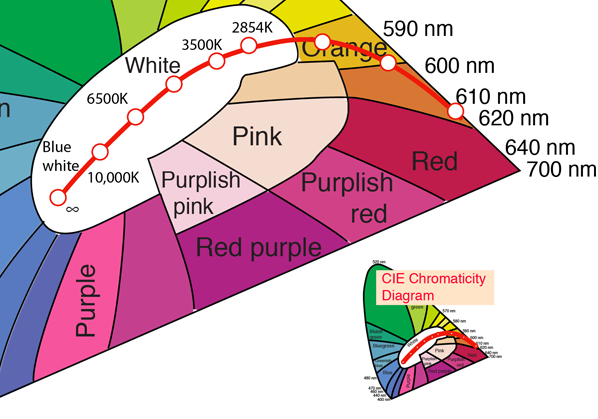Color Temperature
What do you mean by a "pure white" light source? How do you characterize the difference between light sources when they are not perfectly white? The standard approach to these kinds of questions is to compare a light source to a blackbody source of a given temperature and characterize the source by the temperature of the blackbody radiator which is closest to it on the CIE chromaticity diagram. The temperature of the most nearly equivalent blackbody radiator is called the "color temperature" of the source.
In practice, a number of standard illuminants are used to approximate white. For accurate color measurement, one must know more than the color temperature - e.g., full spectral power density curves. But the color temperature is a useful concept to reveal the general color balance of the source.
Note that the a high color temperature does not imply that the object is actually at that temperature. For example, fluorescent lights have a high color temperature, but actually may be quite cool in operation.
|
